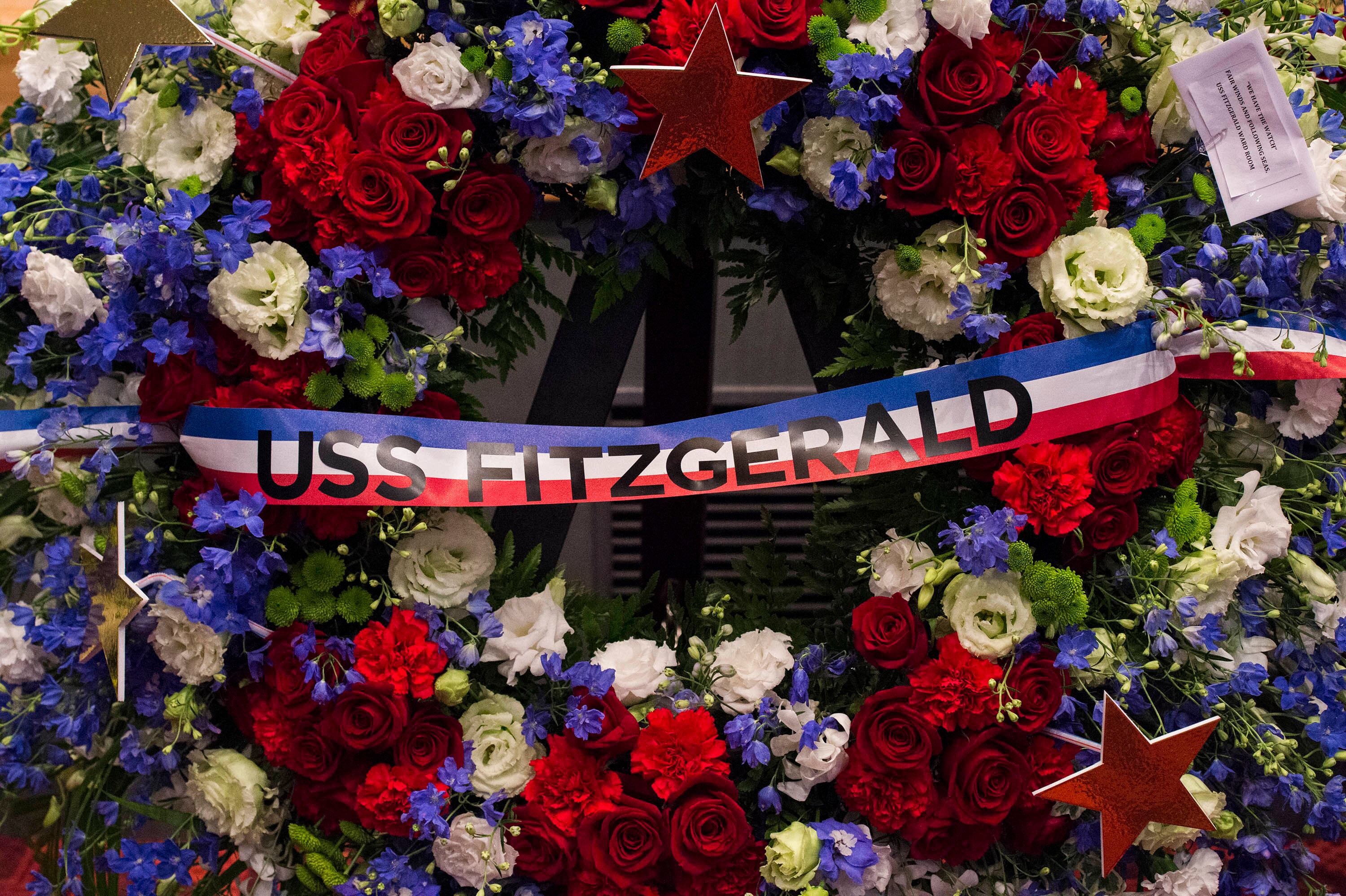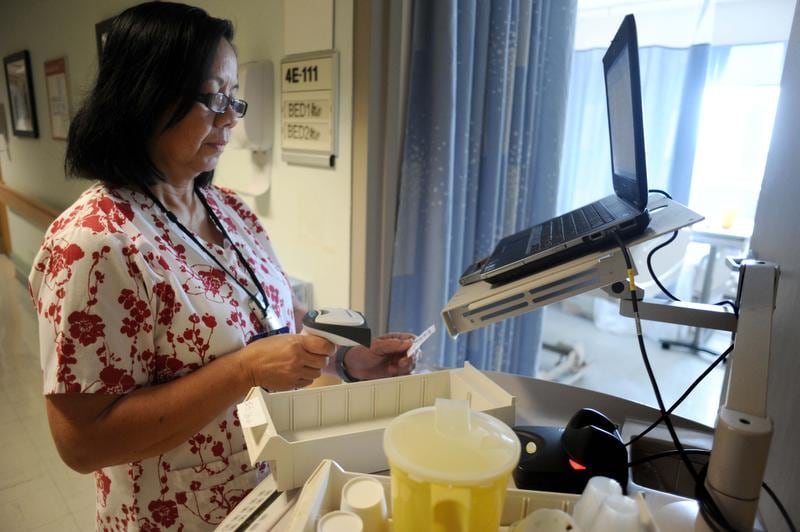If every commanding officer in the Navy demonstrated the courage and dedication to their crew as USS Theodore Roosevelt Capt. Brett Crozier, seven of my friends and former shipmates wouldn’t be dead.
I served in the Navy from 2013 up until March of this year as a journalist and public affairs specialist. I was a poor kid from Massachusetts who ventured across all corners of the Earth and met people straight out of a story book. I also saw earth-shattering tragedy.
Certain aspects of the Navy’s culture and dogmatic beliefs are not only causing it to fail in its mission, they’re killing its sailors — literally. The firing of Crozier for his decisive action to scream from the high heavens to anyone who would listen about the direness of the coronavirus outbreak — and the drama that would unfold in its wake — is only the latest instance of this occurring.
At 2 in the morning on June 17, 2017, 12 miles off the coast of Japan, the USS Fitzgerald collided with the Philippine ship ACX Crystal. The crash killed seven of its crewmembers and injured three others, including the ship’s commanding officer. It is an event I’m all-too-familiar with. I had recently served aboard the USS Fitzgerald; many of the deceased were close friends of mine. Along with the subsequent collision of the USS John McCain two months later, these events represents the greatest loss of life in a naval tragedy since the Oct 12, 2000 terrorist attack on the USS Cole. Thankfully, due to Crozier putting the lives of his sailors first, the USS Theodore Roosevelt will not be added to this tragic list.
Life on a ship can be dirty, which makes them perfect petri dishes for diseases. It is very common for illnesses to tear through ships widely and quickly. On an aircraft carrier, 5,000 people are crammed together in a vessel roughly the size of three football fields. Any given activity, from eating to working out or sleeping, will see you interact with hundreds of people. There are many occasions I can think of where I had gotten sick after an illness that someone picked up in port spread around the ship. This is so prevalent that they are often given nicknames. “The Kangaroo Flu” that we picked up from Australia was particularly rough.
In such places, quarantine and social distancing simply are not an option. Most passageways are only about 3-feet wide and most work occurs in close quarters, requiring constant interpersonal cooperation. Due to COVID-19’s potential two-week incubation period, it is a certainty that people who contracted the coronavirus would be regularly interacting with the rest of the crew and accelerating its spread. It is not too far-fetched then to conclude that the majority of the Theodore Roosevelt’s crew, without immediate intervention, would have contracted the coronavirus, leading to an epicenter with potentially more cases than all of Mexico.
The Navy has continued to downplay the seriousness of the matter. Following Crozier’s firing for “copying up to 30 people” on an email expressing the urgency of the situation, Acting Secretary of the Navy Thomas Modly said in a statement: ”[Crozier] did not take care and what that did is it created a little bit of a panic on the ship.” I, too, would be panicked if I was locked in a giant box containing one of the densest numbers of coronavirus cases in the world.
Crozier knew what was at stake and how fast the virus would spread. “We are not at war. Sailors do not need to die,” he stated in his email. “If we do not act now, we are failing to properly take care of our most trusted asset — our Sailors.”
“The spread of the disease is ongoing and accelerating,” he continued. “Removing the majority of personnel from a deployed U.S. nuclear aircraft carrier and isolating them for two weeks may seem like an extraordinary measure. ... This is a necessary risk.”
Following his removal from duty, Crozier would himself go on to test positive for the coronavirus, only six days following the release of his memo.
Crozier’s letter was not the first time he had tried to communicate the severity of the pandemic through his chain of command. According to Modly, he had established a “direct line” with Crozier “way before” the email was written. During a previous interview with CNN, Modly also stated that “we have been working the last seven days to move those sailors off the ship and get them into accommodations in Guam.”
The primary issue, according to Chief of Naval Operations Adm. Michael Gilday during a Pentagon press conference held on April 1, was that the speed with which Crozier wanted to move sailors off the ship was faster than the chain of command had anticipated. Later that same day, two days after Crozier released his memo, that the Navy finally announced plans to house up to nearly 3,000 sailors who had tested negative for the virus in hotel rooms in Guam.
Modly went on to throw a child-like fit over Theodore Roosevelt’s internal loudspeaker, referring to Crozier as “too stupid or naïve to be a commanding officer” in a profanity-laden tirade crewmembers described as “whiny, upset, irritated and condescending.” It is no small irony that Modly’s shipboard remarks calling Crozier stupid for “thinking the letter wouldn’t leak” would lead to Modly releasing his own letter of resignation on April 7.
To be clear: firing Crozier was not a decision based on a loss of confidence in his abilities. Crozier was fired for highlighting a lack of competence in the Navy’s abilities.
This is not the first time the Navy has ignored warnings of perilous situations, nor is Crozier the first officer to be relieved of duty for speaking out. In the wake of the USS Fitzgerald and USS John McCain tragedies, Vice Adm. Joseph Aucoin, commander of the 7th fleet in the Pacific, was fired and the ship’s captain, Cmdr. Bryce Benson, faced a court-martial before all criminal charges were dropped. Both men had repeatedly attempted to warn the chain of command — and were ignored — that the Navy was running the Fleet into the ground through over-exhausted crews and inadequately maintained ships, according to an investigative report by ProPublica.
This is a reality I witnessed firsthand.
I spent 295 days deployed aboard the USS Fitzgerald not long before the “mishap,” as the military refers to such incidents. I saw the crew’s hardships, their struggles and triumphs. I lived it. There are no “normal” days on a forward-deployed vessel. Every day is grueling and tests your limits. I saw some of the strongest, bravest people I have ever met pushed to the brink. The majority of the 200-person crew — crammed into a vessel less than 500 feet long — barely slept, considering themselves lucky if they could get more than three straight hours of sleep in a night.
Every day on a ship is different. The crew has to balance doing international operations with: maintenance of the ship, drills, inspections, watches, resupplying and refueling, certifications, helicopter flight operations and more. Everyone has different jobs and roles they play on the ship, but a day for a sailor on the USS Fitzgerald could look something like this.
“General Quarters, General Quarters, all-hands man your battle stations.” The ship’s intercom blasts as you quickly stumble out of your rack. It is 5 in the morning, but ships conduct these drills on a regular basis. You throw your coveralls and boots on as fast as you can and run to your designated station; time is everything during these drills. Every crew member must regularly keep up on qualifications in damage control and first aid, and are assigned a position if a crisis was to happen on the ship.
You act out what you would do in a simulated crisis. Oftentimes you may need to redo it a few times until it’s perfect. It’s finally over and you have an hour to go down to the galley to eat before it closes, shower, shave and get into formation to begin your normal work day. Following standing at attention while your supervisors tell you the plan of the day, you immediately head into cleaning stations. You grab a mop and begin to thoroughly clean a designated area for one hour.
Now you have to do maintenance. Every division has certain equipment onboard the ship that they are responsible for, and sailors can spend hours a day learning about the systems, fixing the systems, filing paperwork on the systems, inspecting the systems, as well as operating them. On top of that, you have to attend several workplace training sessions throughout the day. On top of that, you have to do your regular job. Maybe it’s down in the engineering spaces working on a diesel engine or in the pilot house plotting the course.
There are designated hour-long blocks allocated for lunch and dinner in the ship’s galley, though sailors missing meals due to workplace obligations is common. You are sitting in the galley eating poorly seasoned food when all of a sudden, the internal sound system goes off again. “Flight Quarters, Flight Quarters all hands man your flight quarters stations.” There is a helicopter inbound and you are one of the many sailors involved in its landing. You put on your protective equipment and work tirelessly to ensure the successful landing, refueling and take off of the Seahawk helicopter.
Add in more work, cleaning and maintenance throughout the day and its now 10 p.m. The ship’s lights are out and you have a few hours that you can sleep, but you have 12 a.m. to 4 a.m. watch tonight. You quietly stumble out of your rack and report to your watch station. Either you are somewhere on the ship acting as look out, or monitoring some radar or weapons system, just making sure business is usual. Depending on the watch, it can be either isolating, quiet and exhausting, or fast-paced, intense and exhausting. After watch is over, you head to your rack for the little bit of sleep you can squeeze in before whatever the next day brings them.
Every day, for months at a time.
By the end of my time on the Fitzgerald, we were all becoming delirious. Exhausted. Your mind goes to weird places as exhaustion sets in. People’s behavior begins to become more bizarre.
Shortly before completing our deployment, world events hit the exhausted crew like a ton of bricks when North Korean leader Kim Jong Un test-fired a ballistic missile from a submarine. Unfortunately for the crew, another ship originally tasked with sailing to the East China Sea to deter aggression had to be repaired. The depleted crew of the Fitzgerald, rather than head home, diverted course to the icy waters of a Korean winter.
I remember when they announced that instead of going home, we would be staying out patrolling North Korea indefinitely. My heart sank; all our hearts sank. It had been hundreds of days since we had been home and we were all worn out and beat down, but this was a real-world event. No one knew what would happen, we could potentially be standing on the edge World War III. People were afraid and exhausted, relying on the pure adrenaline that something could happen at any moment.
We were lucky. The rest of the crew continued to endure a rigorous operational tempo and sleep deprivation for another deployment. The Fitzgerald then spent six months in an intensive drydock restoration period, and though millions of dollars of repairs were done to the ship, many systems were still out of commission, including its combat systems suite that operates its radar systems. Perhaps most devastating was the massive turnover of about 70%. Leaving the crew without the experience of sailors who understood the region.
With the demands of 7th Fleet’s mission of constant presence in the western Pacific, the Fitzgerald was immediately put back to sea while needing to undergo multiple inspections and certifications. With parts of the ship nonoperational and little to no time available to train the new crew members, the deployment was a disaster waiting to happen.
As early as 2012, there were multiple attempts to alert the Navy’s upper command to conditions throughout 7th Fleet. That year Navy Undersecretary Robert Work attempted to convince the secretary of defense that the demands of the pace of operations were overburdening the fleet, even providing rounds of data proving his case. Work recalled the reaction he got was, “I don’t believe you.”
The warnings continued as recently as four months prior to the collisions. In February of that same year, Vice Adm. Aucoin presented the commander of U.S. Pacific Fleet Adm. Scott Swift data showing his fleet was suffering due to the pressure of too many operations. This was one of many instances of him raising the alarm, but receiving little to no response. Aucoin was fired after the accidents.
“This is still happening,” said a sailor I recently spoke to who was previously assigned to the Fitzgerald and is now deployed with another ship in 7th Fleet. “On my current ship we are continuing to experience the same exact problems that the Fitzgerald faced. I am physically exhausted by the tempo and inspection cycle, most of the crew are new to the ship and the stress of the current climate ensures there is no time to train them.”
“This is a disaster waiting to happen,” he continued. “I am terrified that I am going to have to relive the accident again.”
I remember the night I received the call from a close friend of mine who still had close connections onboard the Fitzgerald and knew every detail. I cried. For the first time in years I cried. Nothing was ever the same afterwards, I began to notice an increasingly bad drinking problem that was taking over my life. I spent the last four months of my naval career in treatment for alcoholism. I was fortunate enough that I had a chain of command which, like Crozier, cared about their sailors first. I got the help I needed, but most people are not as lucky. Currently, 20 veterans die from suicide every day.
The Navy frequently floats buzzwords like "presence,” and “operational readiness” and is willing to sacrifice anything to maintain appearances. The actual condition of the vessels and crew did not matter as long as we continued to flex our muscles across the Pacific Ocean, particularly in the South China Sea.
The Navy has a choice to make, it can either view the actions of Capt. Crozier as a shining light leading to a new direction where there is an increased value of its sailors lives, or it can keep going on its current path. How many more lives does it have to cost before there is a change?
Editor’s note: The date of the attack on the USS Cole has been corrected.
This is an Op-Ed and as such, the opinions expressed are those of the author. If you would like to respond, or have an editorial of your own you would like to submit, please contact Military Times managing editor Howard Altman, haltman@militarytimes.com.





